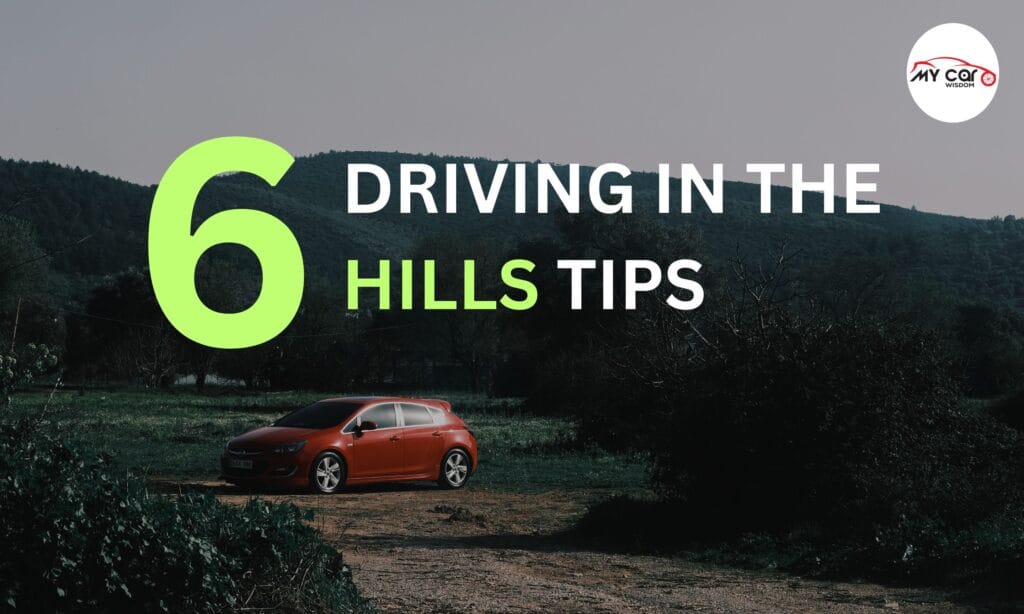A Car trip to the hills is one of the most scenic and soul-refreshing experiences one can have in India. Whether you’re heading to Manali, Ooty, Mussoorie, or the winding roads of Sikkim, driving through hilly terrains is an adventure in itself. But for those not used to steep slopes, hairpin bends, and narrow roads, hill driving can be tricky—and even risky—if you’re unprepared.
So, before you pack your bags and hit the road, here are 6 essential hill driving car tips that every Indian driver should know for a safe and enjoyable journey.
1. Check Your Car’s Condition Before You Go
Unlike city roads, hill routes often don’t have service stations or mechanics readily available. That’s why a pre-trip inspection is critical.

What to check:
- Brakes – Hilly terrains demand frequent braking. Get them checked, and replace worn-out brake pads.
- Clutch – Steep inclines often require clutch control. A slipping or hard clutch can lead to dangerous situations.
- Coolant and Engine Oil – Engine overheating is common in hill driving, especially during summer.
- Tyres – Grip is everything. Ensure your tyres have sufficient tread depth and correct pressure.
Pro Tip: In cold hill stations like Himachal or Uttarakhand, under-inflated tyres may improve grip on icy roads.
2. Master Engine Braking: Avoid Overusing the Brakes

Many first-time hill drivers overuse their brakes when going downhill. This is not only dangerous due to brake fade but can also wear your braking system prematurely.
Use Engine Braking Instead:
- Drive in low gears (like 1st or 2nd) while descending.
- Let the engine control your speed instead of constantly pressing the brake pedal.
- This reduces brake temperature and gives better control.
Common Mistake to Avoid: Don’t drive in neutral or keep your clutch pressed downhill — it removes engine control, making the vehicle more prone to slipping.
3. Sound Your Horn at Blind Turns

Indian hill roads often have blind curves due to dense trees or steep hillsides. Oncoming traffic—especially buses or trucks—can suddenly appear.
Be proactive:
- Use your horn before every sharp turn, even if you don’t see another vehicle.
- Flash your headlights in the dark or foggy conditions to alert others.
Many Indian hill roads have signs like “Horn Please on Curves” — these are not decorative, they’re lifesavers.
4. Use Pull-Off Areas to Give Way
Most hilly roads in India are single-lane or narrow two-lane roads. Knowing when to give way is crucial, especially when larger vehicles like buses or trucks approach.
Follow these rules:
- Uphill traffic has the right of way. If you’re descending, stop safely to let the vehicle climbing uphill pass.
- Use designated pull-off areas to stop.
- Don’t block the road while taking photos or stopping for views.
Pro Tip: Never stop in the middle of a curve. Always find a flat, visible spot with enough space.
5. Be Alert for Landslides, Animals, and Unexpected Obstacles

Indian hill roads are not just about traffic. You’ll often face natural elements and unexpected surprises.
Watch out for:
- Landslide-prone zones – Especially in monsoon months (June to September), keep an eye out for falling rocks.
- Wild animals or cattle – Especially in forested areas like Ooty or Coorg.
- Local traffic and walkers – School kids, villagers, and cyclists frequently use the roads.
Carry a basic emergency kit with flashlight, first aid, tow rope, and reflectors—especially if traveling through remote regions like Spiti or Northeast India.
6. Drive Smoothly – No Sudden Movements
Hill driving is not about speed, it’s about control.
Driving tips for better control:
- Accelerate gradually – sudden acceleration may cause tyre slippage on inclines.
- Avoid hard braking unless it’s absolutely necessary.
- Keep a steady pace and maintain a safe distance from the vehicle ahead.
- Use the handbrake on steep inclines when stopped to prevent rollback.
If you’re driving a manual car, mastering the hill start technique is essential:
- Use the handbrake + clutch balance method to move forward without rolling backward.
Automatic Car Tip: Most modern automatics have “hill assist” or “low gear” mode—use it when climbing or descending.
Bonus Car Tips: Stay Hydrated and Well Rested
Driving in the hills demands constant focus and calmness. Make sure you:
- Take frequent breaks to rest your eyes and mind.
- Stay hydrated—high altitudes can make you feel drowsy or dizzy.
- Avoid driving at night unless it’s absolutely necessary. Visibility drops significantly, and help may not be available quickly in case of a breakdown.
Final Thoughts
Driving in the hills of India is a beautiful experience—but only when done responsibly. With sharp curves, unpredictable weather, and narrow roads, even a small mistake can lead to major consequences. Whether you’re a seasoned driver or a first-time visitor to hill stations, keeping these 6 must-know tips in mind will ensure your journey is safe, smooth, and memorable.
So next time you head to Nainital, Darjeeling, Munnar, or any other scenic hill spot, remember: a safe drive is the best start to any mountain adventure.
Ready to Conquer the Hills with Confidence?
Whether you’re planning your first hill trip or you’re a seasoned traveler, My Car Wisdom is your go-to pit stop for expert car advice, maintenance tips, and road safety hacks. From understanding engine braking to prepping your vehicle for hilly terrain — we’ve got you covered.
Stay informed. Stay safe. Drive smart.
Explore more expert-backed guides, real car reviews, and driving wisdom for Indian roads.
Raja Yadav, the content writer at My Car Wisdom, brings a unique voice and style to our blog. With a knack for storytelling and a keen eye for detail, Raja ensures that every piece of content is informative, engaging, and easy to understand. His focus is on delivering high-quality articles that cater to both novice car owners and seasoned automotive enthusiasts.




